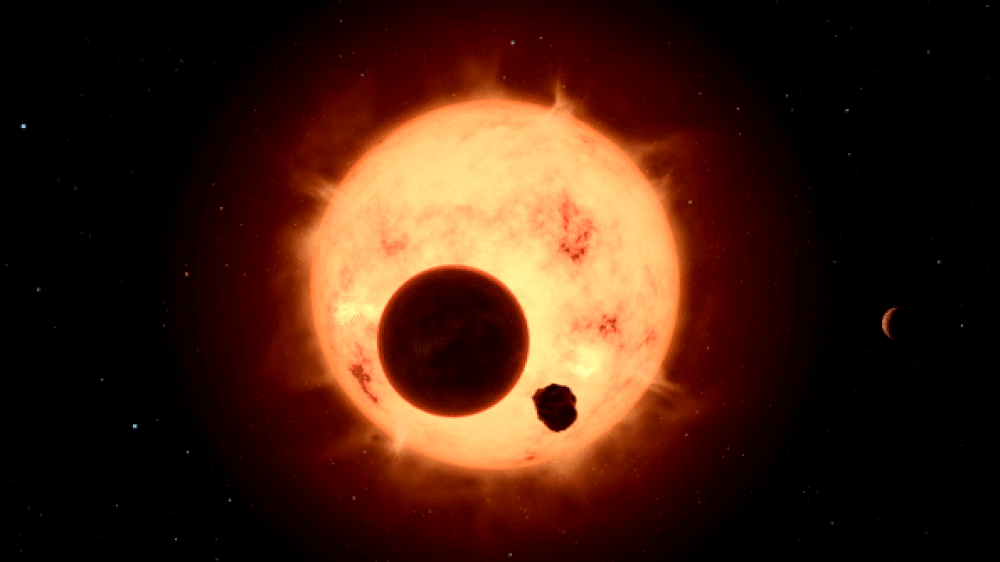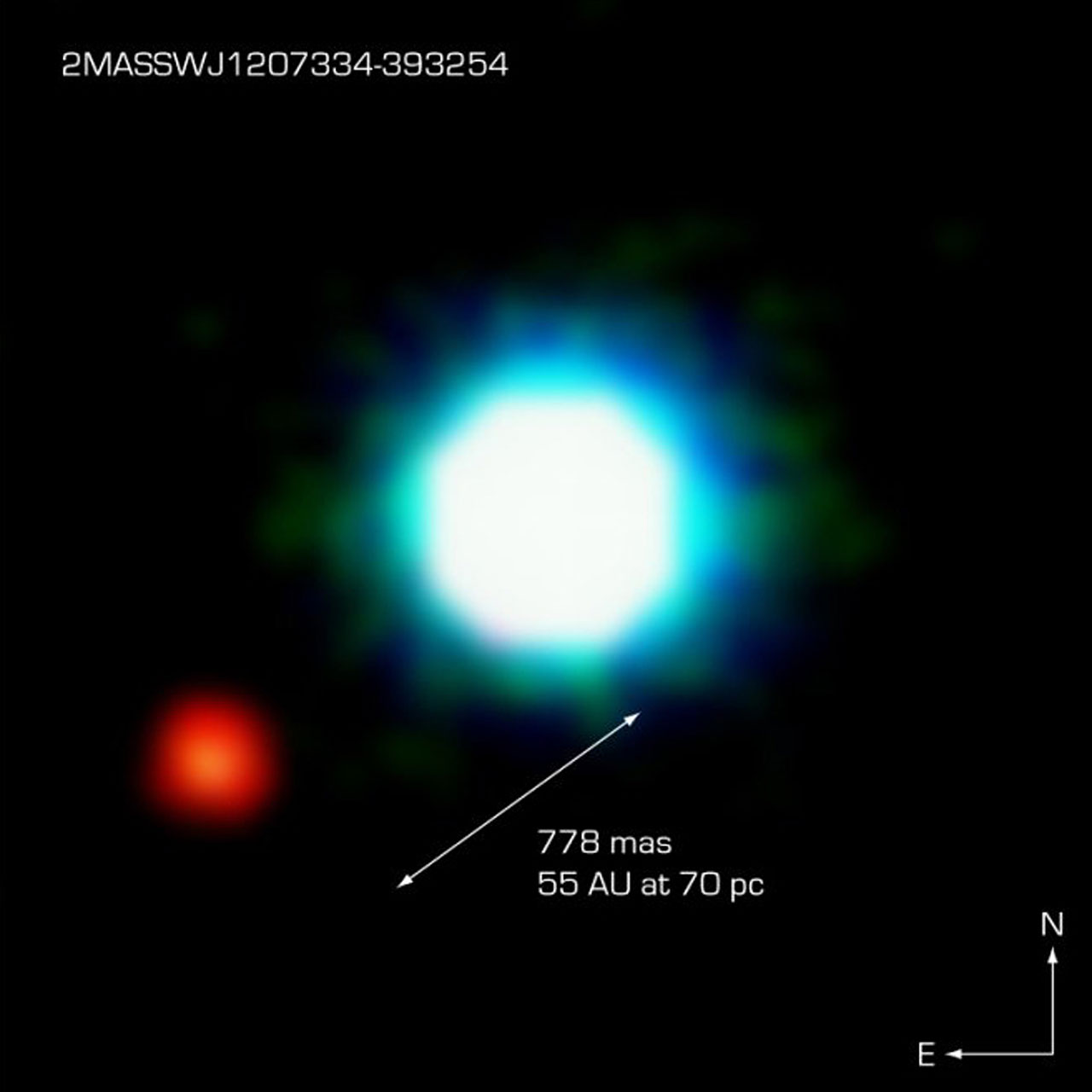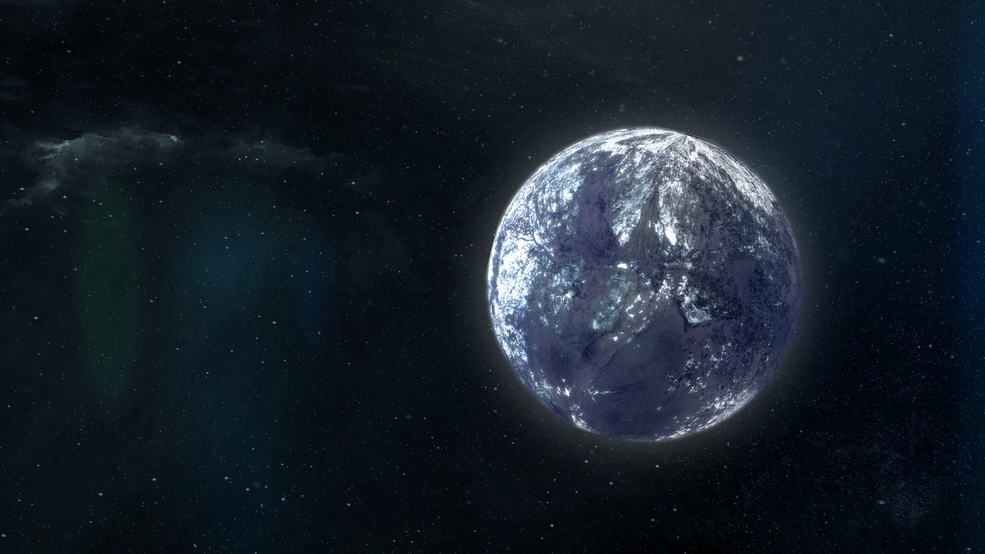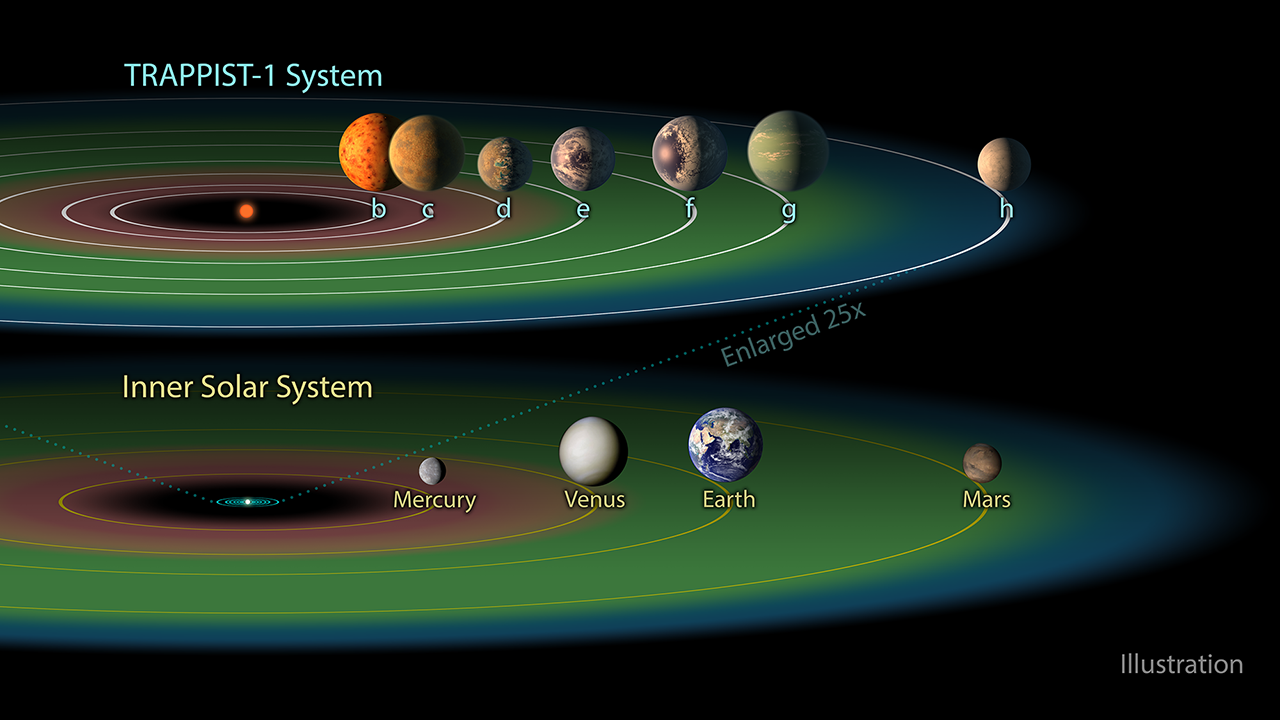Exoplanets: Everything you need to know about the worlds beyond our solar system
Thousands of exoplanets have been discovered since the 1990s, including "hot Jupiters," "super-Earths" and other types of alien worlds.

Exoplanets are planets that orbit stars other than the sun and thus exist outside the solar system. The word "exoplanet" derives from the term "extrasolar planet," which hints at its existence beyond the influence of our star.
Prior to the 1990s, humanity had never observed a planet beyond the solar system and thus could not confirm such worlds existed. In the more than three decades since the first discovery of an exoplanet, NASA's exoplanet catalog has burgeoned. As of 2023, the exoplanet catalog contains over 5,500 confirmed exoplanets and almost 10,000 additional candidate exoplanets.
Exoplanets that orbit in the so-called habitable zone — the region around their star where it's not too hot or too cold to sustain liquid water — are targets for the search for life outside the solar system.
Related: The 10 most Earth-like exoplanets
Exoplanets FAQ
Can life survive on exoplanets?
That depends on the exoplanet. The chances of life existing on an exoplanet are significantly greater if that planet exists in the habitable zone of its star. Astronomers are also currently becoming aware of the possibility of "Hycean worlds." These planets are dominated by liquid oceans and could hang on to liquid water outside standard habitable zones, thus widening the potential area around a star in which life could exist.
Can humans go to exoplanets?
Currently, the closest exoplanet to Earth is Proxima Centauri b, which orbits the star Proxima Centauri, located 4 light-years away. The crew-carrying module of the Artemis missions is Orion, which, according to its maker, Lockheed Martin, has a top speed of 24,000 mph (39,000 km/h).
That means that traveling constantly at this top speed and assuming no diversions, it would take Orion over 1 billion hours to reach Proxima Centauri. That's more than 114,000 years, so until the invention of light-speed travel or suspended animation , it is not possible to travel to an exoplanet.
How many planets are exoplanets?
Over 5,500 exoplanets have been discovered so far, with a further 9,900 suspected exoplanets awaiting confirmation. All this has happened since 1992, so these numbers are likely to change frequently. Fortunately, NASA's exoplanet catalog is updated continually, so you can check the updated list of the number of exoplanets discovered.
Types of exoplanets

One thing that has become abundantly clear in humanity's exploration of exoplanets is that planets come in a much wider range of categories than can be seen in the solar system.
While our planetary system hosts a relatively ordered system of terrestrial planets, like Earth; gas giants, like Jupiter; ice giants, like Neptune; and dwarf planets, like Pluto, exoplanets are more diverse and more disordered.
Hot Jupiters
Hot Jupiters are gas giant exoplanets that orbit close to their stars and complete a full orbit in just a few Earth days.
The "hot" in "hot Jupiter" refers to the proximity of these planets to their star, which can lead to searing surface temperatures. The "Jupiter" in the name refers to the fact that these worlds have sizes and masses that are most comparable to Jupiter's, though they can be many times more massive or just a fraction of its mass and size.
The proximity to their star can cause hot Jupiters to "puff out' to huge diameters while making them incredibly light in terms of density. Some of the lightest exoplanets ever found are hot Jupiters.
Hot Jupiters' size and proximity to their stars also create greater effects on these stars, meaning they are easily seen using the radial velocity and transit methods. This means the exoplanet catalog is heavily and disproportionately weighted in favor of hot Jupiters.
There is nothing like a hot Jupiter in the solar system, and some evidence suggests that these planets may form farther out, like Jupiter and Saturn are in our solar system, and then migrate closer to their stars.
Hot Jupiters overlap with the following categories of exoplanets when examples of these worlds are found close to their stars.
Terrestrial exoplanets
Terrestrial exoplanets are roughly Earth-size worlds outside the solar system that are composed of rock, silicate, water and carbon. The bulk composition of these worlds is dominated by rock or iron, and they can have either a solid or liquid surface, according to NASA. A deeper investigation of these exoplanets is required to determine if they have atmospheres or oceans.
Perhaps unsurprisingly, as Earth is the only planet we are aware of that hosts life, these worlds are the major targets in our hunt for life beyond the solar system.
Super-Earths or mini Neptunes
Super-Earths, alternatively known as mini-Neptunes, are planets that are up to twice the size of Earth and have up to 10 times the mass of our planet — meaning they're larger than terrestrial planets but smaller than ice giants and gas giants. Super-Earths don't necessarily have to be terrestrial planets; they can be gas giants.
Neptunian exoplanets
Neptune-like exoplanets (or Neptunian exoplanets) are worlds similar in size to Neptune and Uranus — around four times the size of Earth and around 17 times its mass. Neptunian worlds are thought to have mixed interiors but heavy metals at their cores.
The missing planets
Neptune-size worlds are a mystery for astronomers because so few are discovered close to their stars. This lack of "hot Neptunes" with orbits of around four days or less has come to be known as the "hot Neptunian desert." One suggested reason for this could be that if planets don't have a lot of mass, the radiation from their stars easily strips their atmospheres, thus quickly turning potential hot Neptunes into super-Earths.
Rogue exoplanets

Rogue planets, also known as isolated planetary-mass objects and free-floating planets, are worlds outside the solar system that are not gravitationally bound to stars. That means that they wander the Milky Way alone without a parent star.
One possible explanation for rogue planets is that they form in planetary systems and are then flung away by gravitational interactions with other planets in the same system or by encounters with another star system. A less plausible, but still viable, formation mechanism is that rogue planets form on their own, outside planetary systems.
According to NASA, a study suggested that when NASA's Nancy Grace Roman Space Telescope comes online, it could spot as many as 400 Earth-mass rogue exoplanets using microlensing.
How do astronomers discover exoplanets?
Discovering exoplanets is tricky because, unlike stars, they don't emit their own light — or at least not enough to help locate them. This means that most techniques exoplanet hunters use to discover exoplanets are related to spotting the effects a planet has on its parent star.
Here are the five main methods astronomers use to spot exoplanets.
Radial velocity method
Historically, the first method used to detect exoplanets was the radial velocity method. According to the European Space Agency (ESA), this technique works because when a planet orbits a star, that planetary system's center of mass is located within the star, as it has considerably more mass than its planet.
This center of gravity is located off-center within the star, causing the star to "wobble" back and forth ever so slightly. Because wavelengths of sound or light are squashed as a source moves toward an observer and are stretched as the source moves away — known as the Doppler effect — astronomers can observe and measure this wobble.
Transit method
The unquestioned monarch of exoplanet detection is currently the transit method, which works by measuring tiny dips in light from a star caused as a planet moves across its face — or transits the star — between that star and Earth.
Data detected during transits can be used to determine the exoplanet's orbit and size. Plus, by looking at the light passing through the planet's atmosphere, astronomers can investigate the composition of gases around it.
That means that, in the modern era of exoplanet investigation, during which scientists are delving deeper into exoplanet atmospheres than ever before, hunting for biosignatures — elements that are vital to life and traces of living processes — the transit technique has unparalleled utility.
Gravitational lensing
Few phenomena are more useful to astronomers than gravitational lensing. First predicted in Einstein's 1915 theory of general relativity, gravitational lensing happens when a path of light curves as it travels past a warp in space-time .
When light from a background object passes a massive object — a lensing body — between it and Earth, its path is diverted, resulting in the brightening of the background source, a shift in the apparent position of that source or, in extreme cases, the appearance of the background source in multiple places in the same image.
This applies to an exoplanet because, if it comes between Earth and a distant background source, it will act as a lens for that source's light. Because the mass of intervening planets is small, this effect is tiny — so the method is known as microlensing.
This method can be really useful for the discovery of rogue exoplanets, which lack parent stars but can be sighted when they warp the light of other background stars.
Direct imaging
As of November 2023, just 69 exoplanets have been spotted the old-fashioned way: with direct imaging. Why is this so tough? ESA explains that the light from a planet's parent star overwhelms that planet by a factor of over a million.
Astrometry
Remember the wobble that helps inform the radial velocity technique? It also forms the basis of another exoplanet detection method, albeit one that is much less successful.
Astrometry takes repeated measurements of the positions of stars in the sky and uses them to infer motion, including the kind of wobbling caused by an exoplanet in orbit, according to ESA. This is extremely difficult to do, so astrometry has uncovered only three exoplanets so far, according to NASA.
Don't rule out astrometry just yet, though. ESA's Gaia mission is currently making highly detailed, precise observations of star positions across a vast swath of the sky over Earth. ESA predicts that eventually, Gaia could use astrometry to reveal tens of thousands of exoplanets at distances as great as 1,600 light-years from the sun.
Major exoplanet discoveries
Although astronomers have found thousands of exoplanets, a few stand out as major discoveries.
51 Pegasi b
51 Pegasi b was the first exoplanet discovered orbiting a sunlike star. It was found in 1995 by astronomers Michel Mayor and Didier Queloz, with the duo sharing the 2019 Nobel Prize in physics for the breakthrough (along with James Peebles "for theoretical discoveries in physical cosmology.")
Found by the radial velocity method, 51 Pegasi b is a hot Jupiter that orbits its parent star at a distance of around 0.0527 times the distance between Earth and the sun, completing an orbit in just 4.2 Earth days, according to NASA. It has around 0.46 times Jupiter's mass and 1.27 times its diameter.
Poltergeist and Phobetor
Although 51 Pegasi b was the first exoplanet found around a sunlike star, it wasn't the first exoplanet ever discovered. That honor goes to a duo of planets called "Poltergeist and Phobetor," discovered in 1992 by Aleksander Wolszczan and Dale Frail. Poltergeist and Phobetor are also known as PSR B1257+12 b and PSR B1257+12 c, respectively.
The TRAPPIST-1 system

Located around 40 light-years from Earth, the TRAPPIST-1 system comprises seven planets orbiting a relatively cool red dwarf star; the first two of these planets were discovered in 2016, and the remaining five were found in 2017, according to NASA.
What makes this system extraordinary is that all seven planets seem to be similar to Earth in terms of their size and rocky composition, and at least three orbit their star in the habitable zone, making them prime targets in the search for life outside the solar system.
As soon as it came online, the James Webb Space Telescope (JWST) began observing the TRAPPIST-1 system and has already measured the temperature of TRAPPIST-1b using its thermal emissions — the first time light emitted by an exoplanet has been measured — and determined that the exoplanet seems to lack an atmosphere.
WASP-76 b
Another hot Jupiter, WASP-76 b, discovered in 2016 using the transit method, is an extraordinary exoplanet.
WASP-76 b orbits its star at a distance of just 0.033 times the distance between Earth and the sun and completes an orbit in 1.8 Earth days. The planet, which is 1.83 times the width of Jupiter and 0.92 times its mass, is tidally locked, meaning one side permanently faces its parent star while the other perpetually faces space.
This sends the temperature of the dayside soaring to 4,350 degrees Fahrenheit (2,400 degrees Celsius), while the nightside is a relatively cooler 2,730 F (1,500 C). This means that iron is vaporized on the planet's dayside and is then blown across to the nightside, where it cools and falls as iron rain. As such, WASP-76 b is a stark reminder of how truly alien exoplanets can be.
Exoplanet expert Q&A
We spoke with Nikku Madhusudhan, Professor of Astrophysics and Exoplanetary Science at the Institute of Astronomy, University of Cambridge about exoplanets.
Nikku Madhusudhan's research focusses on understanding various aspects of exoplanets, including their atmospheres and how they formed.
What is so fascinating about exoplanets?
One of the most fascinating aspects of exoplanets is their vast diversity, which far surpasses planetary properties and processes encountered in the solar system. This diversity allows us to study a wide range of fascinating planetary phenomena.
Equally important, exoplanets provide the opportunity to answer arguably one of the most fundamental questions in science: Is there life elsewhere?
How does your work relate to exoplanets?
My research focuses on understanding various aspects of exoplanets, including their atmospheres, interiors, formation mechanisms, habitability and biosignatures. We pursue these areas using a combination of spectroscopic observations of exoplanets with large telescopes, detailed theoretical modeling and statistical methods.
How has exoplanet research changed over the past two decades?
Two decades ago, exoplanet research was focused primarily on discovering new planets. At that time, less than about hundred planets were known, mostly detected using the radial velocity method, and the first transiting exoplanets were just being discovered.
It was also a time when the first detections were being made of transiting exoplanetary atmospheres, through observations of a few atomic elements using optical and UV spectroscopy.
Over the last two decades, the field has undergone a major transformation. Today we know of over 5,000 exoplanets and that exoplanets are extremely common and extremely diverse over various properties, such as sizes, masses and orbital architectures. We also now know that small planets, between Earth and Neptune in size, are extremely common.
Atmospheric measurements have become routine, with many dozens of atmospheres detected with various telescopes in space and on the ground, mostly for giant exoplanets. Most recently, the James Webb Space Telescope is further revolutionizing the field by making it possible to observe the atmospheres of small planets in the habitable zones around their host stars.
One of the major drivers of the field today is to study the atmospheres of low-mass exoplanets, to understand their chemical compositions and physical processes, as well as to understand various aspects of planet formation, internal structures and habitability.
What are some of the most exciting exoplanets, in your opinion?
The most exciting exoplanets, in my opinion, are those in the sub-Neptune regime, i.e. planets with sizes between those of Earth and Neptune, which is about 4 times larger than Earth. Sub-Neptunes have no analog in the solar system and can span a large range of planetary properties. For example, they can include large rocky planets (super-Earths), smaller versions of Neptune (mini-Neptunes), water worlds, hot lava worlds and others. The sheer diversity possible in such planets is exciting to think about.
Within this diversity, I am personally most excited about the recently theorized Hycean worlds. These are planets with ocean-covered surfaces and hydrogen-rich atmospheres with thermodynamic conditions in the oceans similar to those in the Earth's oceans and, hence, conducive for habitability.
These planets are expected to be more accessible for atmospheric observations with current facilities and provide a promising path to search for habitable conditions and potential biosignatures. The recent detections of carbon-bearing molecules in one such candidate Hycean world, K2-18b, have opened exciting prospects in this direction.
What exoplanet discoveries have been surprising?
There are too many to describe here! All the aspects I mentioned above — including the ubiquity and demographics of exoplanets, their diversity, their atmospheres, interiors, and possible formation mechanisms — have elements that are surprising in many ways.
We are really at the cusp of a new era in exoplanet science, with great potential for important breakthroughs in our understanding of planetary processes, habitability and the search for life.
Additional resources
Stay up to date with exoplanet discoveries by visiting NASA's exoplanet catalog. NASA also has a fantastic set of travel posters that beautifully illustrate what travel to such a world would be like. Many exoplanets can be described as "strange new worlds," and no television show has capitalized on the sense of wonder that the exploration of such worlds invokes as the original "Star Trek," which ran from 1966 to 1969. You can read about it here and select episodes to explore yourself.
Bibliography
Exoplanet Catalog, NASA, [Accessed 1/10/23], [https://exoplanets.nasa.gov/discovery/exoplanet-catalog/]
EXOPLANET DETECTION METHODS, ESA, [Accessed 1/10/23] [https://sci.esa.int/web/exoplanets/-/60655-detection-methods]
5 Ways to Find a Planet, NASA, [Accessed 10/10/23], [https://exoplanets.nasa.gov/alien-worlds/ways-to-find-a-planet/]
C. A. Haswell., Transiting Exoplanets: Measuring the Properties of Planetary Systems, Cambridge University Press, 2010, ISBN 978 0 521 13938 0
Exoplanet timeline, NASA, [Accessed 10/28/23], [https://exoplanets.nasa.gov/alien-worlds/historic-timeline/#first-planetary-disk-observed]
51 Pegasi b, NASA, [Accessed 10/28/23], [https://exoplanets.nasa.gov/exoplanet-catalog/7001/51-pegasi-b/]
The TRAPPIST-1 Habitable Zone, NASA Hubblesite, [Accessed 10/28/23], [https://hubblesite.org/contents/media/images/2017/07/3986-Image.html?news=true]
Hot Jupiter, NASA, [accessed 10/28/23], [Accessed 10/28/23], [https://exoplanets.nasa.gov/resources/1040/hot-jupiter/]
Join our Space Forums to keep talking space on the latest missions, night sky and more! And if you have a news tip, correction or comment, let us know at: community@space.com.
Get the Space.com Newsletter
Breaking space news, the latest updates on rocket launches, skywatching events and more!

Robert Lea is a science journalist in the U.K. whose articles have been published in Physics World, New Scientist, Astronomy Magazine, All About Space, Newsweek and ZME Science. He also writes about science communication for Elsevier and the European Journal of Physics. Rob holds a bachelor of science degree in physics and astronomy from the U.K.’s Open University. Follow him on Twitter @sciencef1rst.










